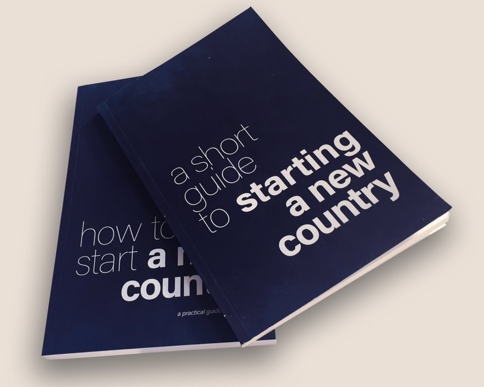 Please buy the book here. Review in The National by Kirsteen Paterson.
Please buy the book here. Review in The National by Kirsteen Paterson.
A blueprint for how to start an independent Scotland, together with a short guide to starting a new nation, arming the independence movement with the most important piece of work completed since the 2014 referendum.
Both books are essential reading for both believers in Scottish independence and undecided voters who seek answers to their practical questions about the processes required for starting an independent country.
The purpose of this work is to explore the practical steps that Scotland would have to take if it wanted to become an independent country. The book’s starting point is the day after the referendum at which a majority of Scotland have voted for independence and it ends three years later with Independence Day.
Based predominantly on Common Weal’s White Paper Project, the book explores how Scotland would build its new systems and infrastructure, how it would pay for it all and how much it would cost.
An independent Scotland should aim to establish itself as a 21st century nation. It is an opportunity to design the country as one which is rooted in modernity, not as an adaptation of a 19th century nation.
This book doesn’t directly tackle the question of whether Scotland should be an independent country but it does lay a roadmap to becoming one once that decision is taken. Unlike Brexit, Scotland will not be faced with waking up the morning after the referendum and asking ‘now what?’
With hard work and imagination, this new country can be built – and should be.
It was serialized in The National in 4 parts:
Part 1: The timeline year 1 – legal personality, transition arrangements, National Commission, recruitment (including a negotiating team and an IT team), constitution, White Paper, implementation plan, new digital Scottish currency, digital payment system, Scottish Defence Force, government systems such as tax and social security systems, relationships with the United Nations, the World Trade Organisation and the European Union, Government departments such as a Foreign Office.
Part 2: The timeline year 2 – bank accounts denominated in the Scottish currency, central bank, Scottish Transmission System Operator (national grid), energy regulator, customs, broadcasting, media regulator (to replace Ofcom), trade negotiations (EFTA, European Economic Area), citizen identifiers (to replace National Insurance Numbers), Scottish civil service, regulatory bodies, physical currency, border preparations, Scottish passports, international treaties. Year 3 will see the final constitution, membership of the European Union, and the monarchy all subjected to a referendum, “shadowing” the existing IT systems, taxes paid in new currency, refinancing of the national debt, full Scottish General Election.
Part 3: The Strategy – A nation needs to collect all its taxes and pay all its wages and benefits, manage its borders, negotiate its foreign relations and so on. The strategy is based on having all of these things in place and fully working by Independence Day. A higher degree of dependence on rUK is harmful to Scotland’s move to independence, so we need to take the time (and a longer transition period) to build our own systems rather than share them with rUK or outsource them. Of the systems which must be in place for Independence Day, the one which will take the longest time is introducing a new currency. The vast majority of what will make the set-up process successful is the quality of the people doing the work – the most important inputs are skills and knowledge. Achieving Scottish independence will be a people-powered job. Scotland must be built by and for all of Scotland. Every step of the process must be transparent and democratically accountable. We must accommodate many different views of our future in its design and set-up; its institutions must be capable of delivering more than one kind of political agenda. The new nation will begin on the back of a massive ‘Keynesian’ economic stimulation, if we plan our strategy properly.
Part 4: Preparation – A White Paper which explains what will happen between a vote for independence and independence day itself, a programme/project plan, a risk register and contingency plan, procurement and, most importantly recruitment.
Yes Edinburgh West has a website, Facebook, Twitter, National Yes Registry and a Library of topics on Scottish Politics, including Independence.
